Get California Online Divorce Forms for $299 – Limited Time Offer!
Read our blogs to get tips on California uncontested, online, and DIY divorce.
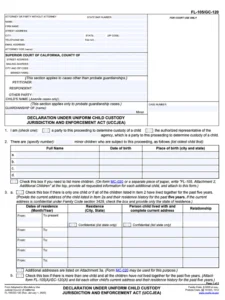

Share

Share
Navigating a divorce in California with kids is tough and the court’s complex forms can make it extraordinarily hard. Fortunately, this guide will make it easier for you to fill out the mandatory FL-105 (UCCJEA) form, which is important for all child custody and support matters. With our help, you will learn why this form is important and how to fill it out correctly.
Form FL-105 is a mandatory declaration required by the Uniform Child Custody Jurisdiction and Enforcement Act (UCCJEA). The purpose of the FL-105 is to tell the court where your children have been staying throughout their minor years.
The FL-105 must be filed for any divorce, legal separation, or custody case in which there are minor children. This information establishes the proper jurisdiction for the state case and prevents courts from conflicting orders across jurisdictions.
If you make an error while completing your own divorce forms it can slow down your divorce. Use the expert guide below to ensure what you have written is factually accurate and legally compliant.
In the first part, please fill in your contact information accurately. If you are representing yourself, write in Self-Represented in the “Attorney For” box.
Provide the name and address of the court (verify this on the court’s website). Identify yourself either as the Petitioner and your spouse as the Respondent, or vice-versa, depending on which party you are in the process.
If you do not have a case number yet, leave that section blank. This would also mean you are a Petitioner. And do not check the Guardianship box, as this is for Divorce or Custody.
Always make sure these particulars match your other filed forms exactly as far as address and name. It should look similar to this when you’re done:
Check the first box to confirm you are a parent involved in this custody case. This simple act formally identifies your role in the proceedings to the court. There is no other information needed in this section.
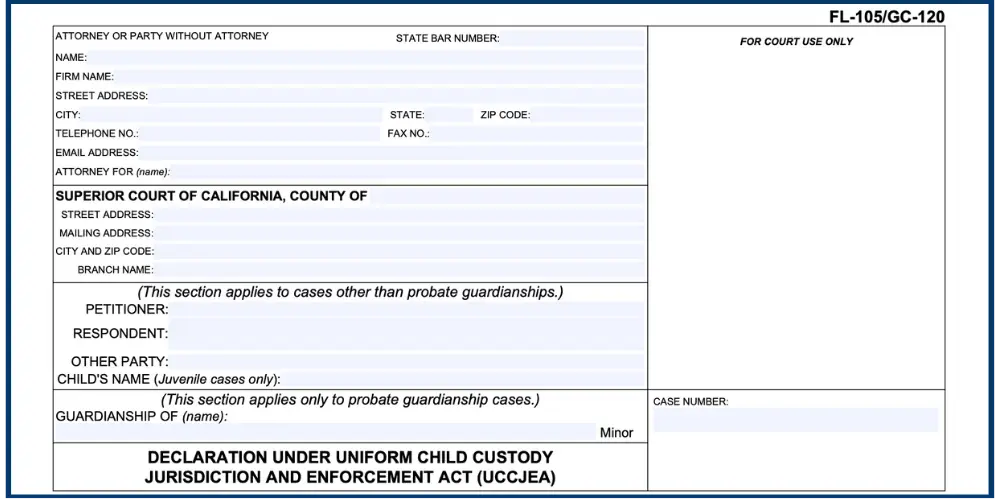
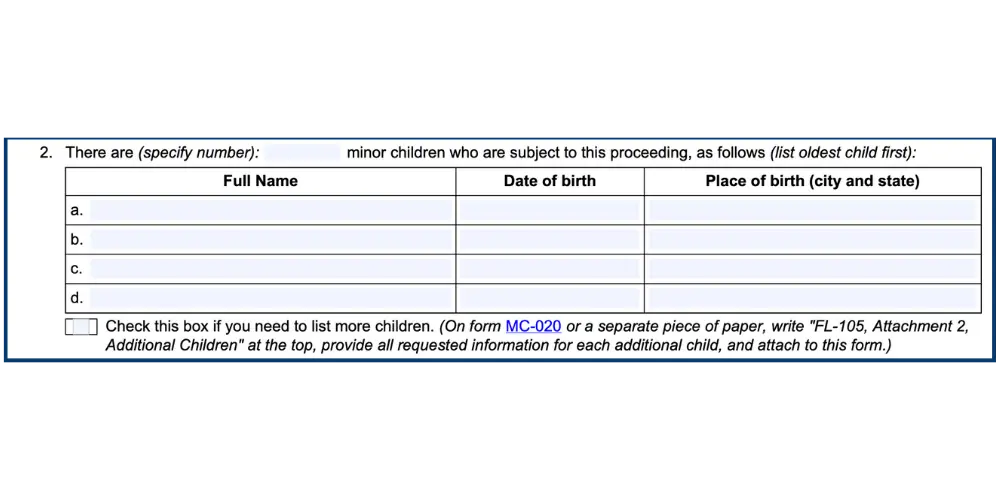
List every minor child from the marriage: You must also include children who are in high school and are 18 years old because they are still considered minors.
For each child, you must give their full legal name, the city and state of their birth, and the complete date of birth. This information is essential for the Court to identify all of the children involved in the case and that California has jurisdiction over the child.
Check off this box if you have only one child, or if all of your children have shared the same address history for only the last five years.
It would look like this: “Child: Emma Doe. 01/2018 – Current: lived at 123 Main St, Riverside, CA, with Mother and Father.” If you do not know the exact dates, provide an estimated date.
If your address is confidential under Family Code § 3429, list only the state. Use “Attachment 3” for additional addresses.
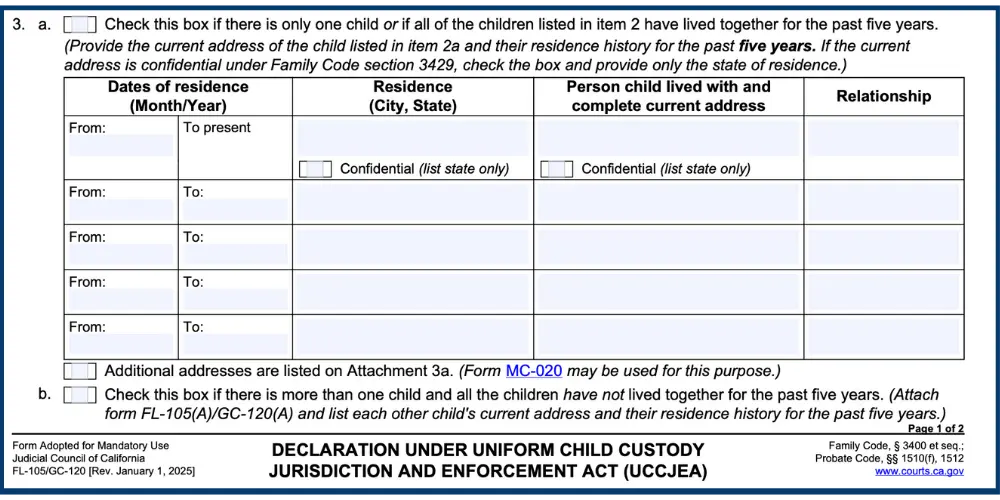
You should check this box only if you have more than one child, and each child’s residence histories are different within the last five years.
You must then attach the supplemental form FL-105A which requires a residence history for each child or sibling group that lived apart. Complete each form FL-105A like you did elsewhere in Section 3a.
Attach all completed forms FL-105A to your FL-105, so the court has a good idea of the jurisdiction for enforcement.
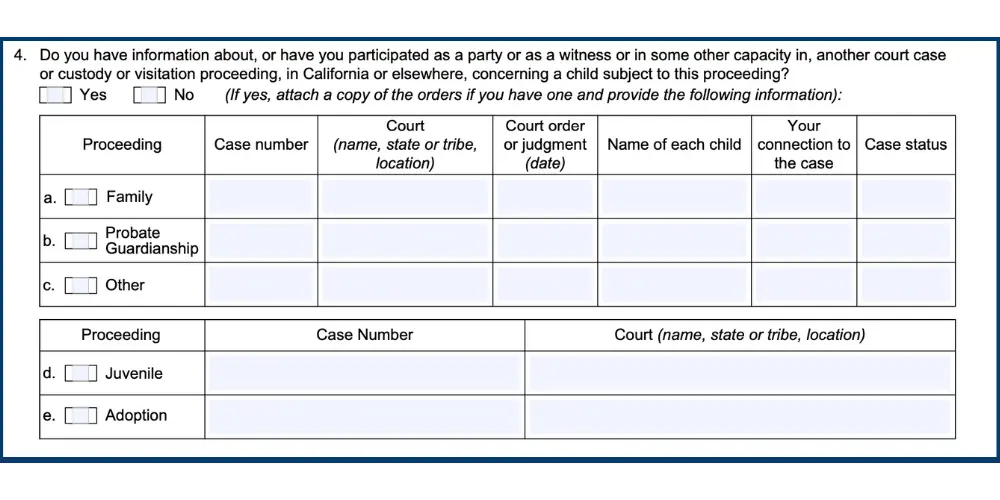
This section asks you to describe any previous or ongoing court cases involving the children in this case. You are required to provide full and complete disclosure to the court. If you have had no previous cases, just check “No”.
If you must check “Yes”, you are required by law to provide complete information for each case type that you need to from the list below. For each case type, please provide the case number, court location, date of the order, children names, and the status of the case.

In this part you need to reveal if there are any restraining or protective orders in existence involving you, your spouse, or your children. If there are no such orders, you must leave the entire section blank. Do not check any boxes.
If there is an active order you must check the box at the top of the section at the very least. You are also required to attach a complete copy of the order with your form filing. You also must check each applicable sub-box to identify where the order was originating from:

In this section, you need to identify if any person that is not a parent in this divorce case has a relationship with your children that could affect custody. You must check “No” only if you and the other parent are the only people involved.
You check “Yes” only if a non-parent, such as a grandparent, currently has physical custody of a child. If you check “Yes,” you must give the person’s full name and complete address.

If you attach any extra pages (like the FL-105A or address attachment) check the box and then write the total number of pages. The declaration above the signature line states you are signing under penalty of perjury to the best of your knowledge everything in the document is true.
And lastly, fill in today’s date and sign your name in the “Signature of Declarant” box. Most counties accept an electronic signature using a certified electronic signature. Otherwise, you can print the form and sign it, ideally with blue ink.
Related: FL 141 California Divorce Form
To submit Form FL-105, take the signed original and two copies to the Superior Court clerk’s office in the county in which you are filing for divorce. It can be filed with other initial paperwork, such as the Petition (FL-100) and Summons (FL-110) as part of your initial filing.
There will be a filing fee unless you qualify for a waiver of the fee (Form FW-001). After you file the FL-105 form, you cannot serve the papers yourself. You will have to have somebody else over 18 formally serve all documents initially filed to your spouse, including the FL-105.
Learning how to navigate court forms by lawyer and yourself is a challenging task, but you have other options. The Complete Divorce plan allows you to receive guidance from Divorce Financial analysts and paralegals complete with all of the paperwork free from a lawyer. This is one way to get a cheap divorce without a lawyer while leaving you with no worries over errors in your documents. We will take care of the details. Find out if you qualify and start your FL-335 for free at The Complete Divorce.
Filling out your FL-105 form correctly is an important step to start child custody jurisdiction in your California divorce. By providing a clear history, you help the court prevent conflicts between states, update the court as to any other legal cases that relate to the children, or whether there are others that have custody rights to your children (other than you and the other parent). Use this article to make sure your form is filed accurately, ultimately helping your legal case run more efficiently.
However, if you still struggle with the form, feel free to contact The Complete Divorce (TCD) for professional help.
You complete California’s UCCJEA Form, the FL-105, which requires your children’s location history for the last five years and any prior court cases. Our guide offers a complete, step-by-step process to help you.
The UCCJEA is the new version of the old UCCJA. California follows the UCCJEA now. It provides clearer, more specific rules for determining when one state has jurisdiction over child custody issues, and makes it easier to enforce out-of-state orders.
Form FL-115 (Proof of Service) can be filled out by you but you do not sign it. It is signed by the adult (18 or older) that formally served your divorce papers on your spouse. This person signs it in order to attest under penalty of perjury that service was executed correctly.

I’m Dina Haddad, a family law attorney-mediator in California. I’m so tired of couples not having a process that’s easy to complete their divorce. They are getting lost, wasting time and money, and beyond frustrated with their results.That’s why I created TheCompleteDivorce. I took my successful mediation practice and condensed it into an affordable and winning program.
An uncontested divorce is the simplest and quickest. That means you and your spouse have agreed on the key issues: property division, debts, as well as child custody and support issues. That way, you do not need to go through a court trial and a long divorce process.
The UCCJEA does not establish or deny visitation rights. Instead, the UCCJEA establishes which state’s court has jurisdiction to make those decisions. Jurisdiction is a fancy word for power or authority. Its purpose is to make sure there are not two state courts at the same time making visitation and custody orders.
The filing fee to the court is mandatory and will be approximately $435-$450. But if you have a contested case that becomes involved in litigation expenses, attorney fees and other costs your total could reach thousands of dollars. An uncontested divorce is the cheapest way to go.